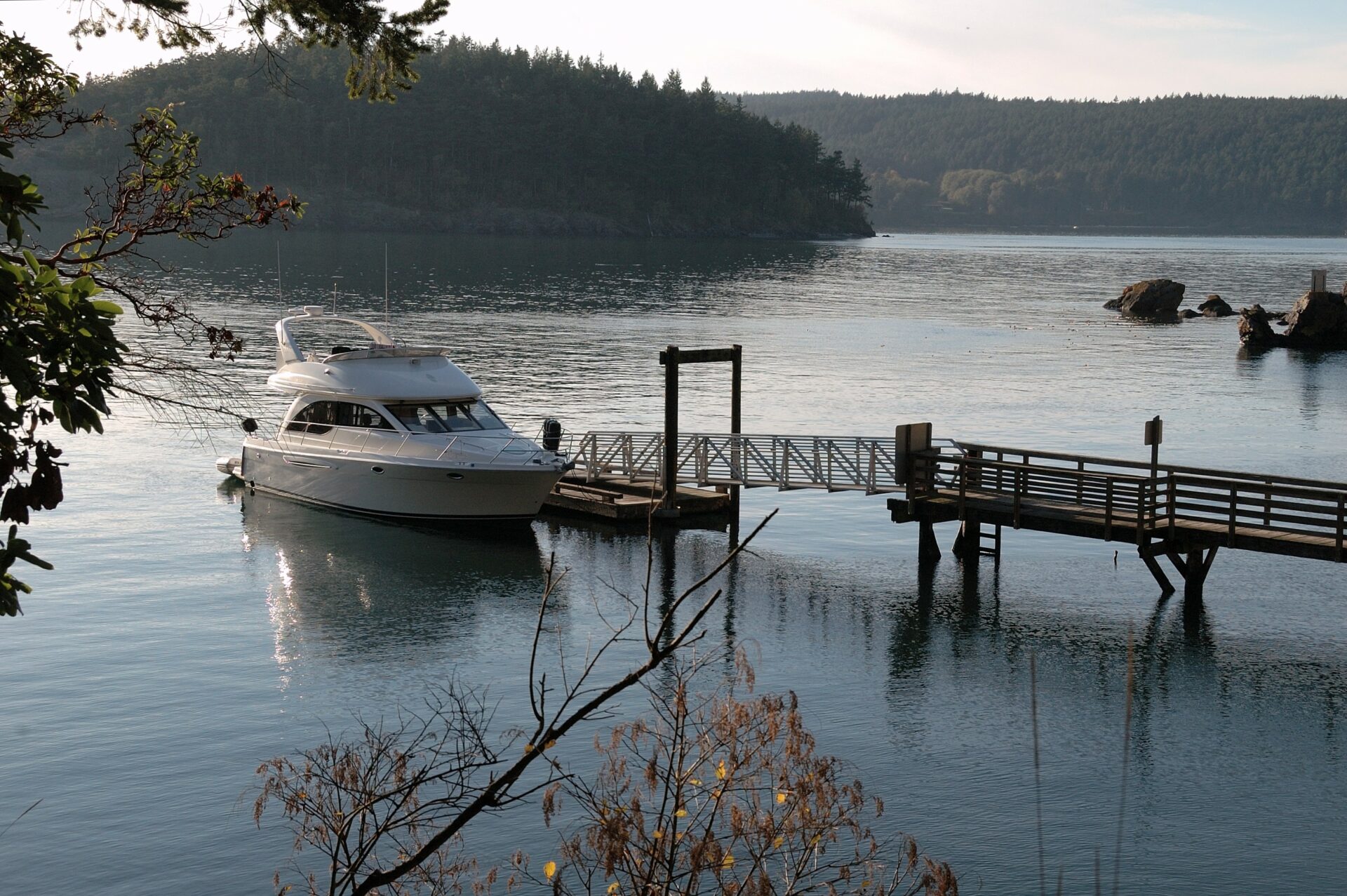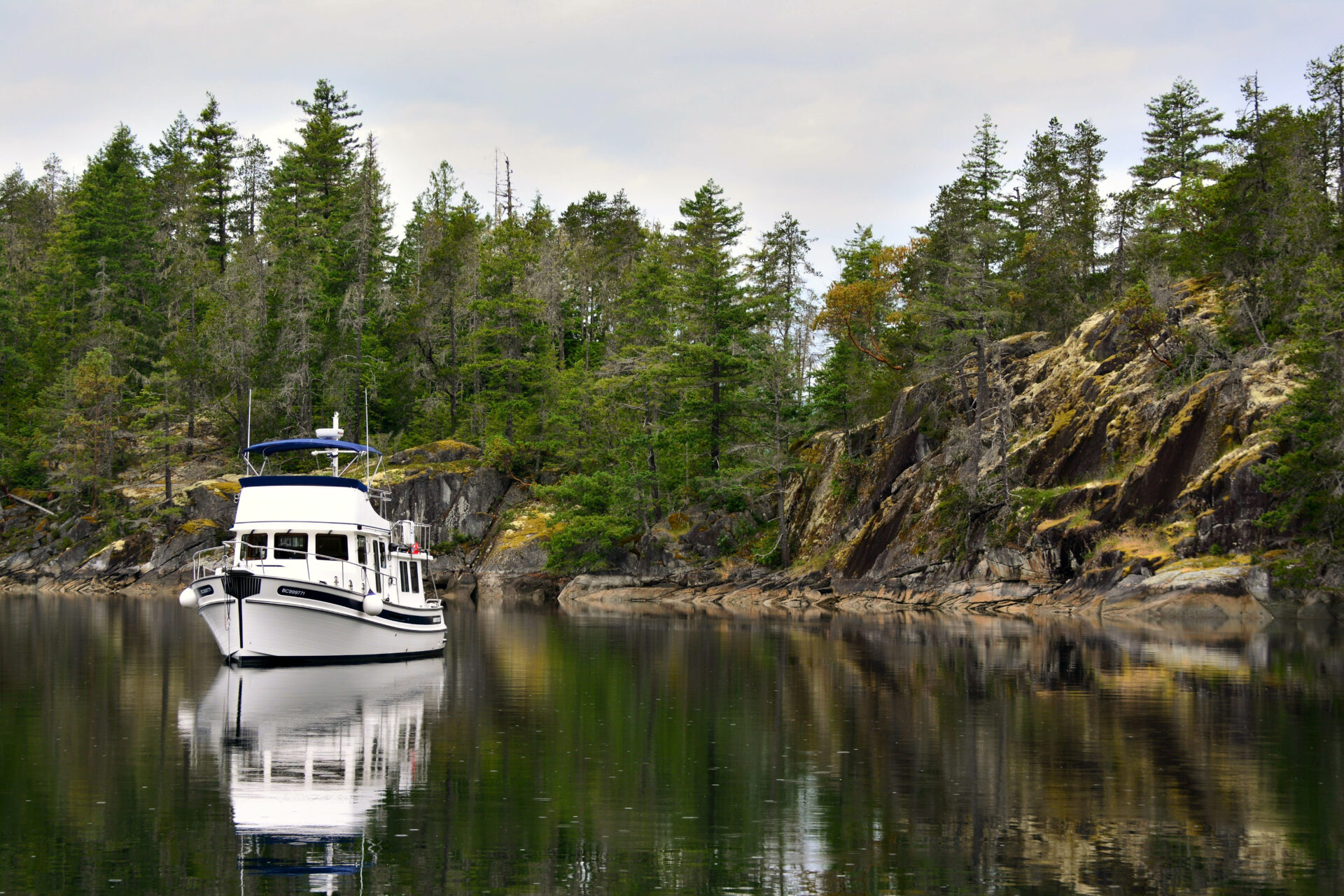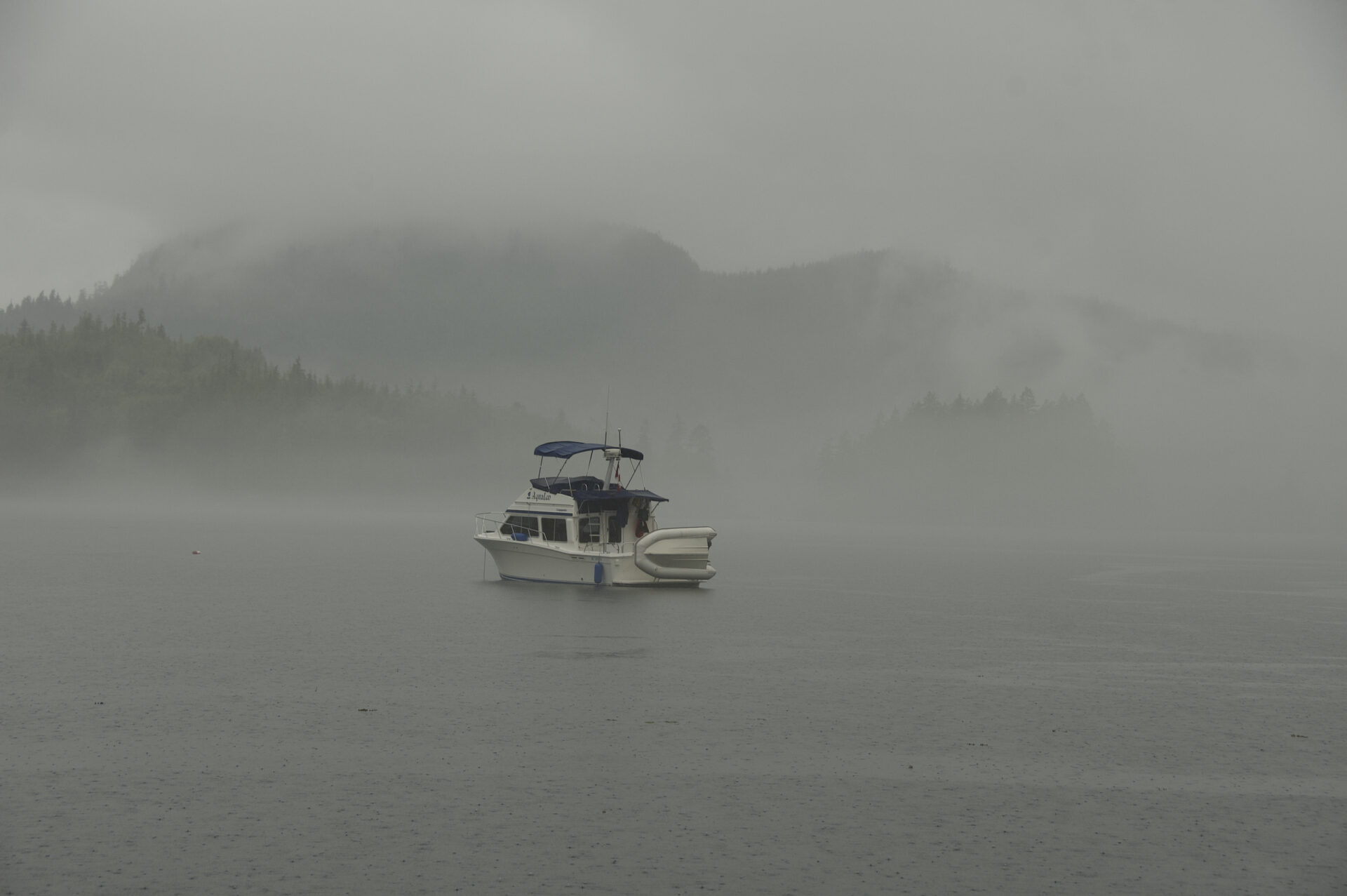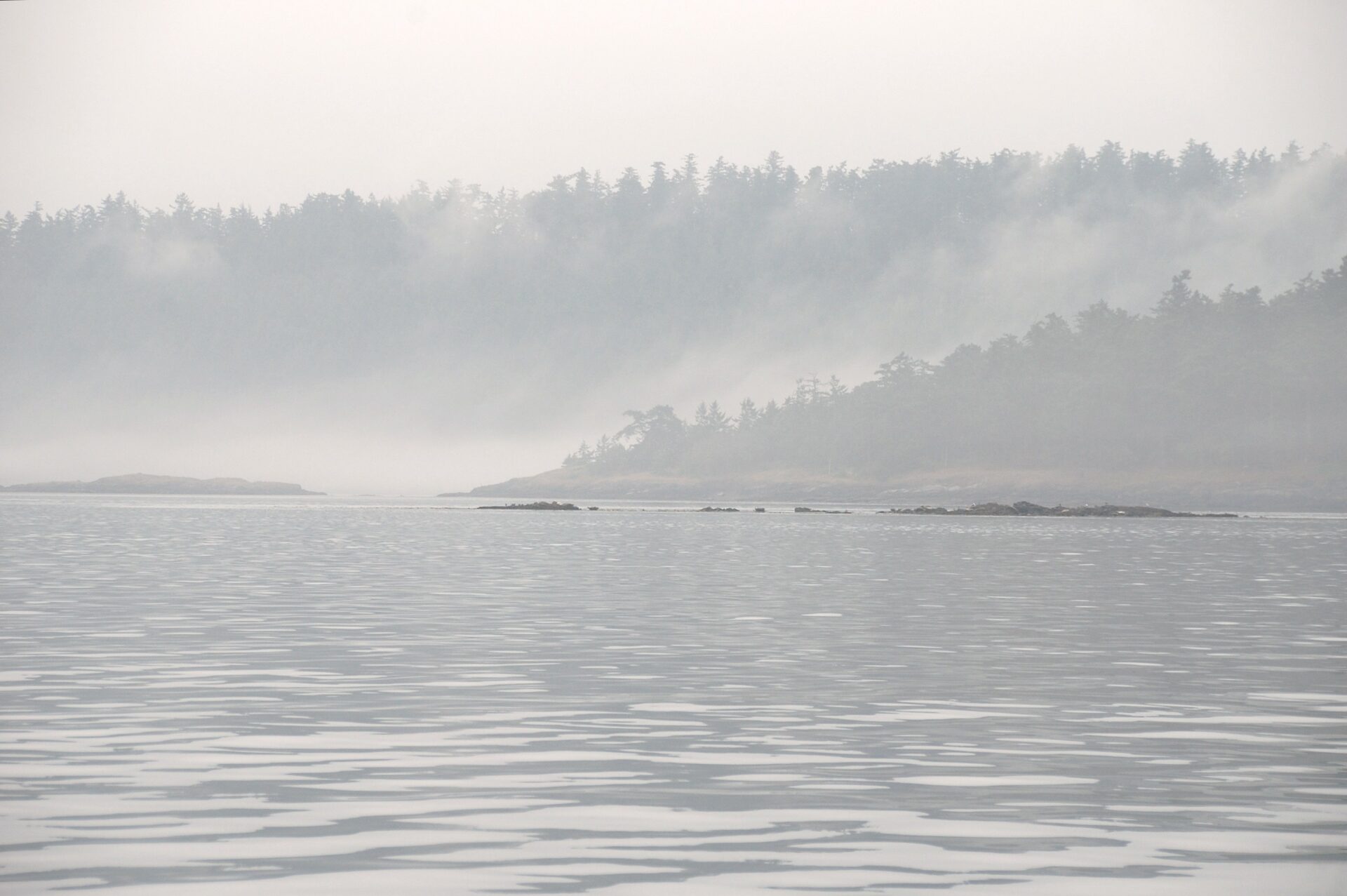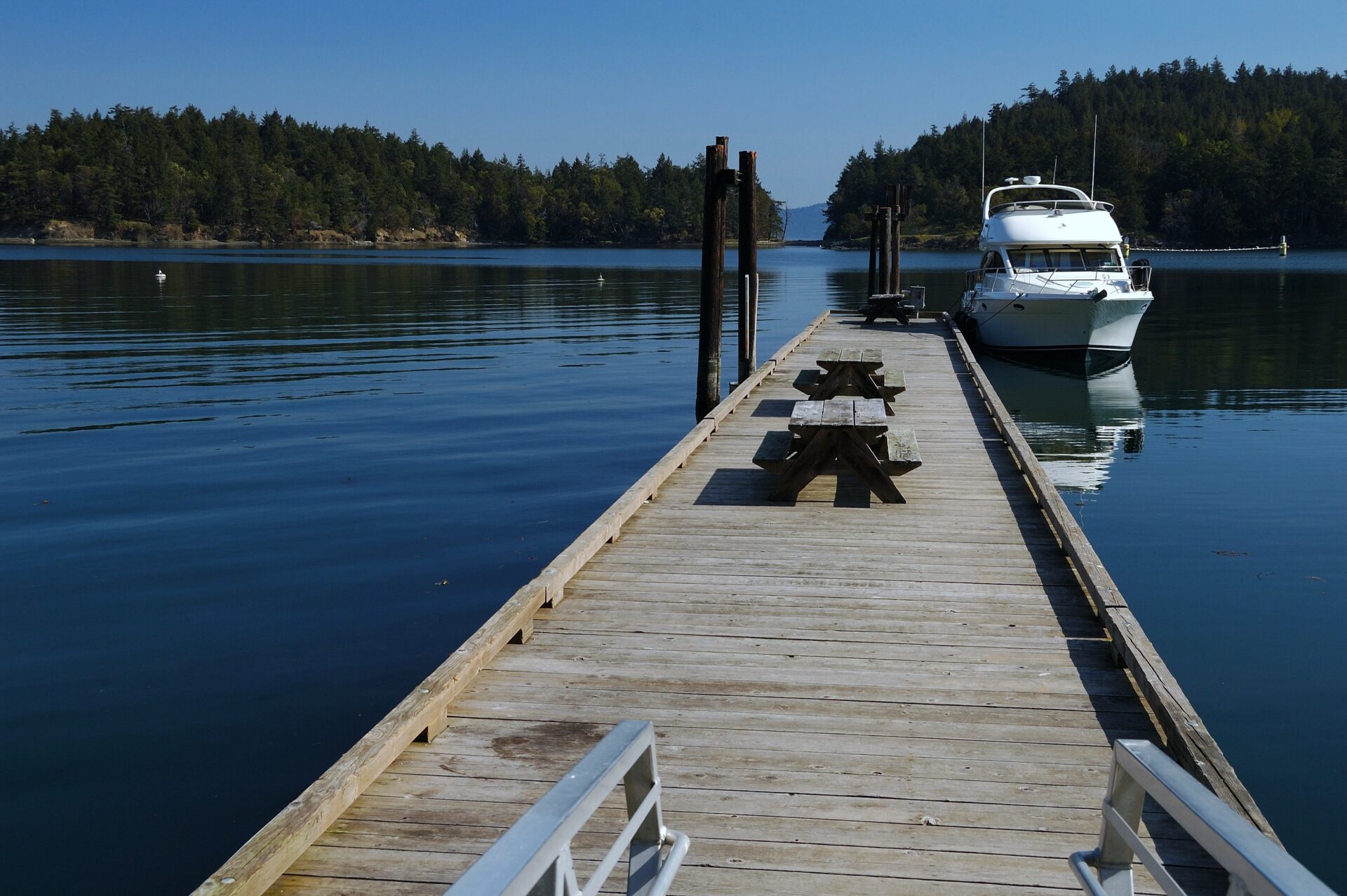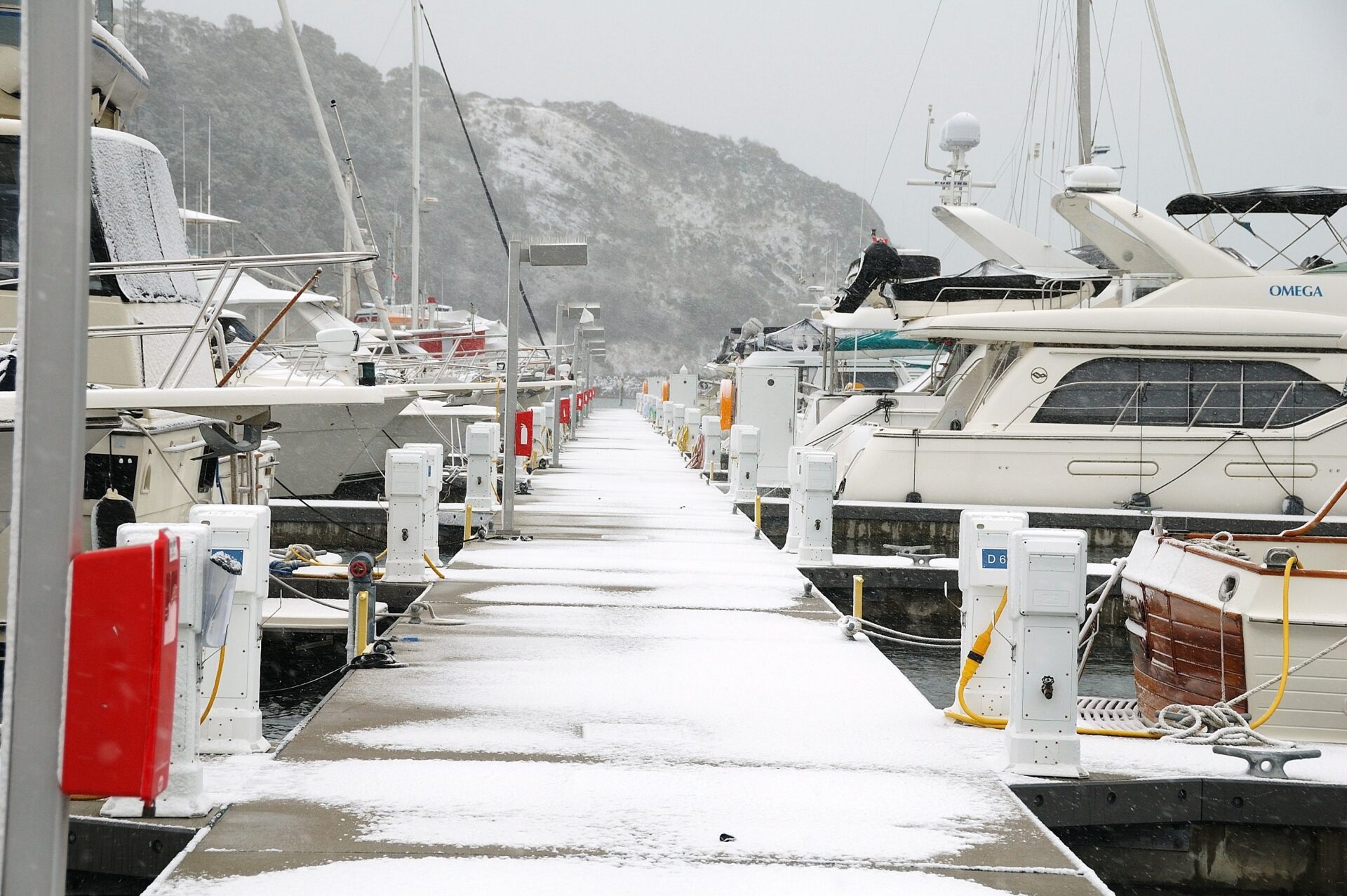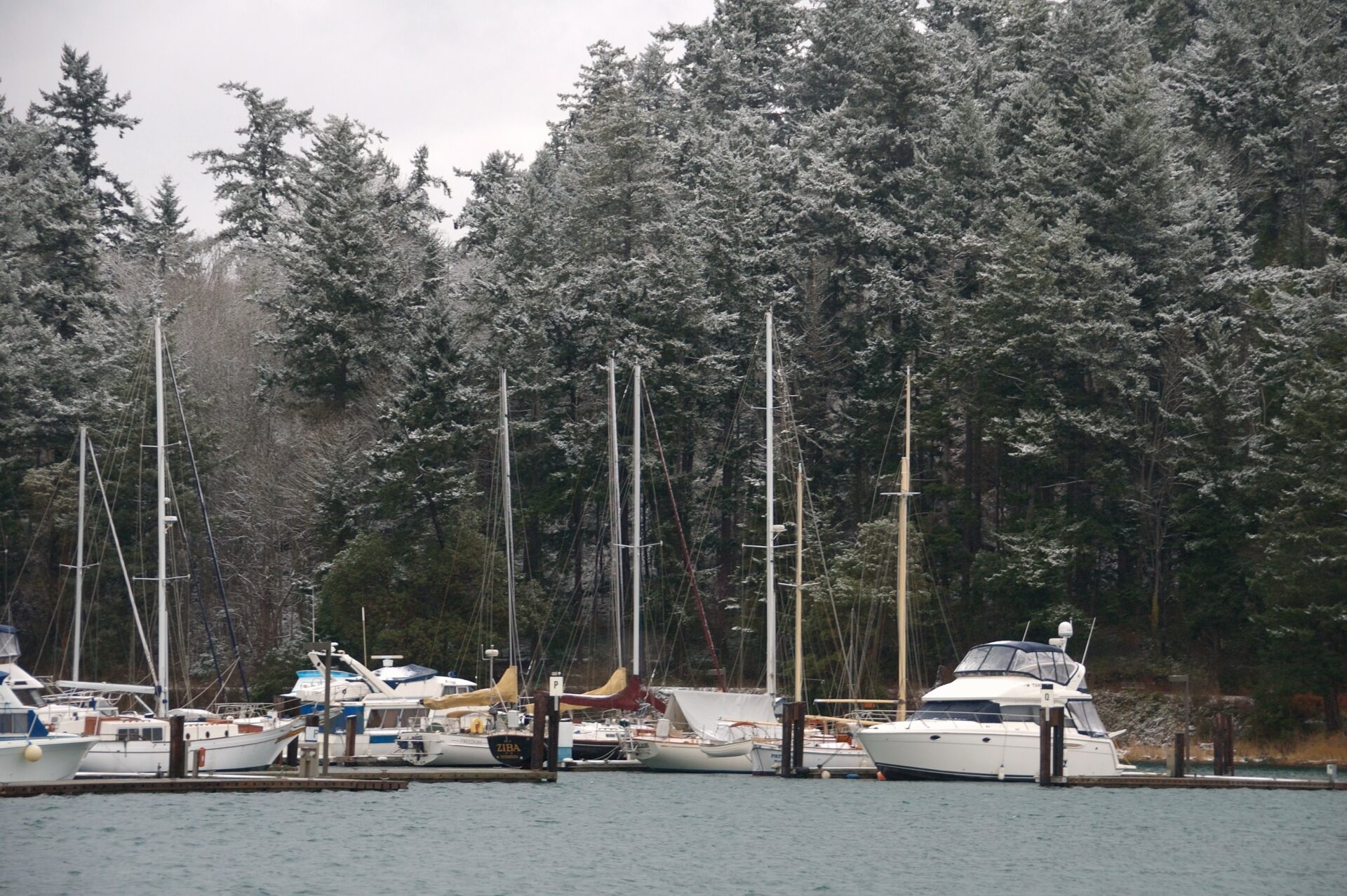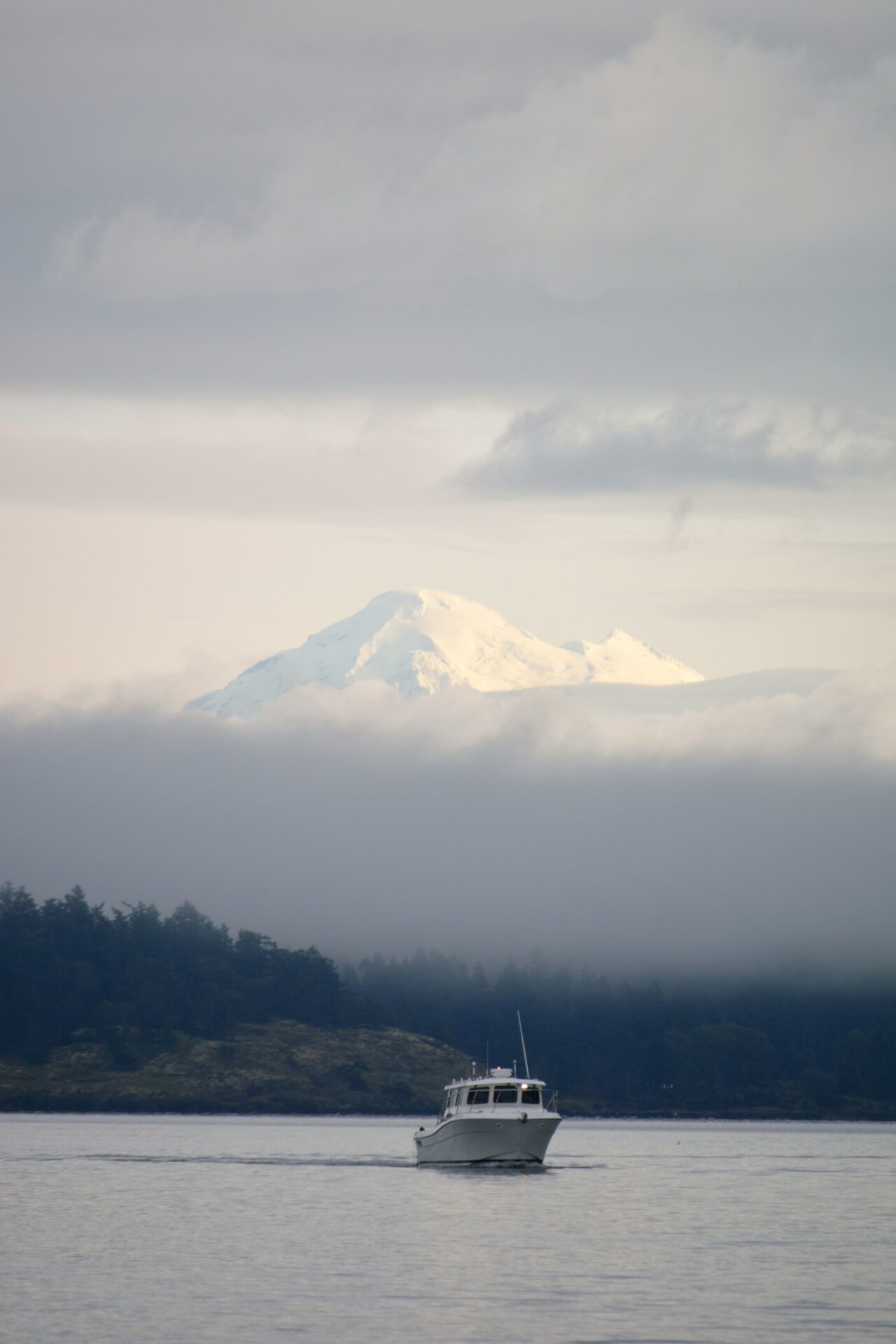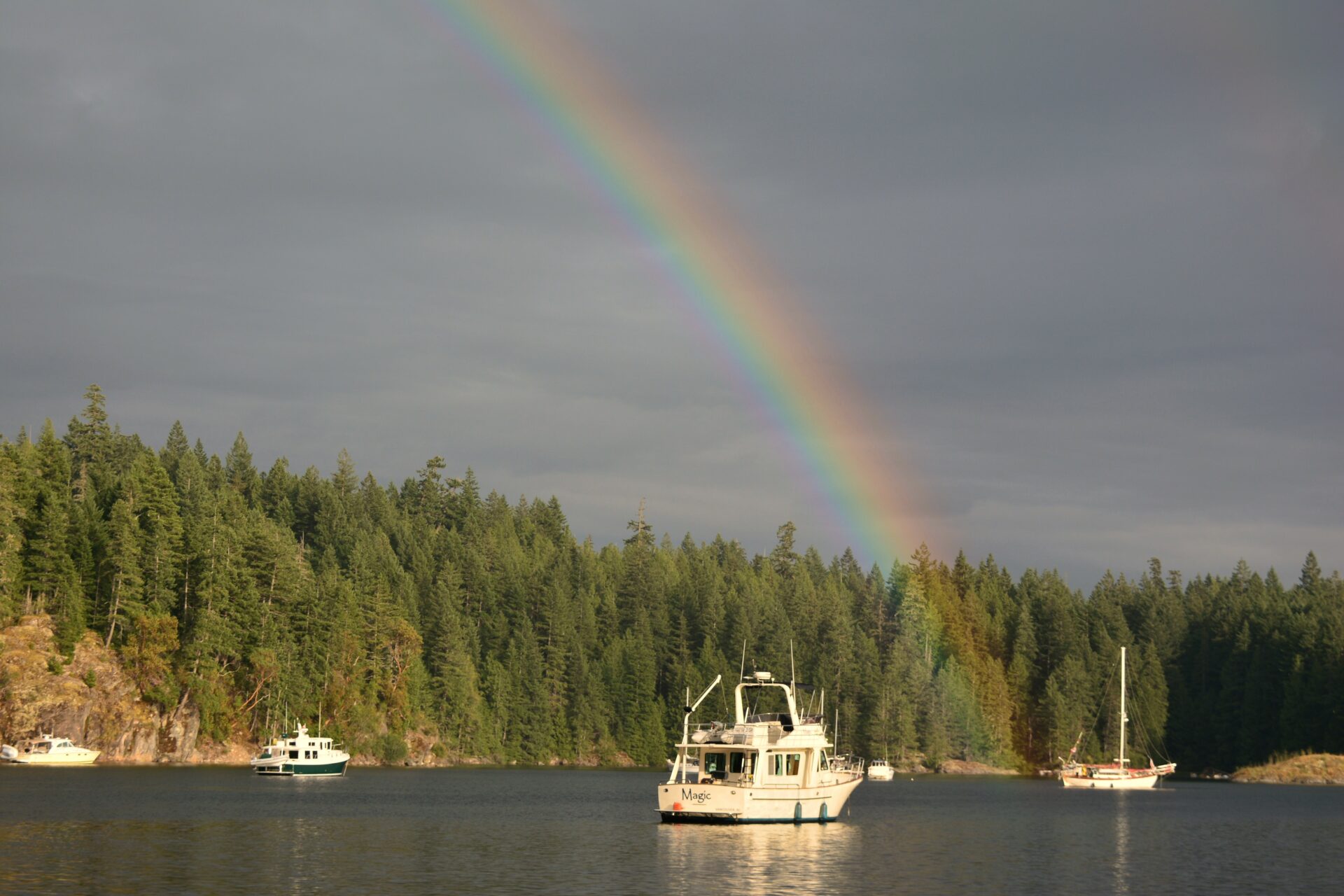Summer has come and gone. As the majority of boaters head home for the season, the waterways open up to those of us determined to continue our nautical experiences. The off-season months offer a respite as anchorages are deserted, marinas and marine park docks become our own private places, guest moorage rates are reduced, and there is no jockeying required at the fuel dock. The sea and wildlife are unencumbered by summer’s steady stream of boat traffic and visitors.
The seals and otters take on an indignant, “this is my cove” attitude. As the weather becomes cooler and days shorter, the winds increase, and storms become more frequent. For many boaters this is bad news, however for seasoned mariners, this change is welcomed with open arms. These few hearty cruisers know the joys of winter boating, but they tend to keep the secret to themselves. Increasingly, however, the secret is getting out.
There are few pleasures better than curling up in a warm saloon with a good book on a rainy day.
But what about the cold? Experienced winter cruisers say coping with the cold is all about the proper mind-set and preparation. Planning for it and equipping you and your boat to deal with it is key. Winter weather can be extreme, but if you and your boat are prepared, it will open another dimension to your cruising experiences.
After Labour Day there are fewer boats out on the water, and the trend accelerates as we move through the calendar. Most boats spend half the year idle at the dock, orphans from October through March at least. A few hardy boaters enjoy the solitude and serenity of off-season boating but if the decision is to go cruising this time of year it is important to be properly prepared and practice safety first.
If the idea of winter cruising intrigues you, but you are hesitant to commit to an extended cruise, consider starting with a short weekend trip. Venture out on a short passage to experience winter conditions and make sure you and your crew are comfortable with the realities of the season.
Let Weather Rule
Check the weather before heading out. Storms occur in fall and winter with more regularity than in the summer and they should be avoided whenever possible. For winter cruising it is important to be flexible, monitor the VHF weather channel and review detailed weather maps. Whatever the itinerary, include extra time for weather changes so not to put your boat and crew at risk. Even though drenching rainstorms will arrive regularly throughout the cooler months, so will those rare crystal clear winter days that we all cherish.
Winter weather patterns will often create conditions quite different from those of summer. Prevailing winds often come from a different direction and are more intense. Even some seemingly protected anchorages may not be entirely secure, as strong winds can spill over a protective ridge, creating fierce williwaws and gusts. To determine which inlets and coves offer the best protection from winter conditions, study the forecasts and correlating weather patterns to the orientation of anchorages. The key to dealing with winter storms are to plan ahead, keep cruising plans flexible, identify safe havens and alternative destinations, pay attention to forecasts and err on the side of caution.
Safety First
Poor visibility due to rain or fog is more common this time of the year, and conditions can deteriorate quickly. Carrying a radar, GPS, AIS, VHF, depth sounder and a chart plotter is advisable. Always be prepared for rough water. Secure all loose equipment on deck before getting underway. If conditions worsen, you or a crewmember do not want to be on deck wrestling to tie something down. Securing everything inside the boat is also important. In rough water, loose items can shift.
Ensure the navigation lights are in working order. The days are shorter this time of the year, which means you might be getting back to the dock or to the anchorage after dark. Replace burned-out bulbs and carry spares on board. Cold temperatures shorten battery life, both in your boat’s system and in flashlights, so carry spare batteries for all your small electronics.
Be vigilant when underway. Winter storms coupled with higher than normal tides drag debris off beaches and into the water, and choppy water can make spotting logs difficult.
As temperatures drop during the winter months pay attention to slippery boat decks and docks. While we advocate wearing a personal floatation device (PFD) anytime you take to the water, wearing one during the cooler months of the year is even more important. Anytime anyone is on the deck or a dock good deck shoes or boots with non-skid soles are a must.
Leave Word
One of the joys of winter cruising is the lack of boat traffic. There can be days when you have the water entirely to yourself. The flip side is, should you experience a breakdown or encounter an emergency, there might be no one else around to assist. So, let people know where you are going. File a float plan or leave details as specific as you can, especially your time of return, with someone who will be expecting you. Include instructions such as: “If you don’t receive a call or text from me by a certain time, notify the authorities.” Also, with today’s electronics, you can leave plenty of digital breadcrumbs, if the boat is not equipped with an emergency position indicating radio beacon (EPIPB), I suggest investing in a personal locator beacon (PLB) to share your coordinates in the event of an emergency.
Warm It Up
Keeping the boat’s interior warm and dry is critical. First and foremost, the key to successful winter cruising is an adequate heating system. This is important not only for your personal comfort, but also for the boat itself, as heat is a critical component of keeping interior moisture levels under control. Electric heaters provide a compact, convenient option when shore power is available, so plan your cruising destinations around docks and marinas that have power available year-round.
For years we had no heat source on our boats and managed fine during fall and spring with the proper clothing. But winter cruising was out of the question. In the winter months, a good source of heat is a number one necessity. For us, while under way our Red Dot system provides warm air salvaged from the engine’s cooling system, and when swinging on the hook or tied to the dock the diesel furnace keeps the cabin toasty and helps dry wet clothing. A hydronic heating system can be plumbed through the hot water tank for instant hot water. Outdoor activities are more appealing if you can easily warm up inside afterwards.
Self-Reliance
If your only means of heat overnight is via shore power, plan ahead. Unless near a major centre, most marinas, fuel docks, stores and onshore amenities will be closed or only open on an abbreviated schedule. Call ahead so not to get caught without.
Before leaving the dock ensure all scheduled/required maintenance and inspections have been completed. Breaking down is never any fun, but during inclement winter weather it could lead to a life-threatening situation.
Carry owner’s manuals on board along with tools, spare engine oil, filters, impellers, belts, pumps, hoses, and hose clamps should minor repairs be required. Self-amalgamating tape is a handy item to have on board. This is stretchy tape that sticks to itself, but not to what it is wrapped around and can be used to temporally repair a leaking hose.
Nobody knows when an accident requiring medical attention may occur. Carry a comprehensive medical kit and know how to use it. Also carry medications for common ailments. You cannot be prepared for everything, but you can prepare for likely problems.
Dealing with Moisture
During the off-season adequate ventilation is particularly important as humidity is higher, and moisture will be brought inside with wet clothing. Cooking also adds moisture to the cabin air. High humidity steams up the windows and hatches, encourages mold and impedes wet items from drying. When combined with your heater, cracking open a couple hatches on opposite sides of the boat will facilitate ventilation and will help reduce the humidity level.
Staying Warm and Dry
Temperatures fall quickly after sunset, and sunset comes early this time of the year. Here on the Pacific Coast the winter months are cooler with temps ranging from 10º C to below freezing. Check the forecast and dress accordingly. Layering is the way to go for staying warm and dry. A coat or sweater can be removed if too warm, but you cannot add one if you don’t have an extra one aboard.
A good set of rain gear is also essential. Both fleece and wool retain their warmth in damp conditions. Toss in a couple of pairs of long underwear (polypro), all-weather nylon pants and lightweight waterproof pants and jackets that fit over the fleece. Your head is a major source of heat loss, so keeping it covered will do a lot toward keeping your body warm. For footwear, choose wool socks (warm, absorbent, and fast drying SmartWool is a good choice), lined deck shoes and insulated boots. If you’re a hiker, I recommend a pair of lug sole boots for those wet slippery trails. For the hands, Polartec gloves with their rubber grip palms and fingers work well.
Setting the Hook
Good ground tackle is priceless for the peace of mind it provides should the winds kick up. For off-season anchoring an oversized anchor and chain rode are a good choice. The more remote the destination, the more prepared you should be to handle a full gale. Use the weather forecast, tide tables and detailed charts to determine exactly where to anchor. Deploy extra scope so you and the crew will sleep better if the wind increases or changes direction. It is a good idea to always be aware of alternative anchoring sites that will offer protection should the wind direction shift. Always have a plan “B” in your hip pocket.
Guard Against Cabin Fever
The days are short, and the nights are long. If accustomed to living in a house with many rooms, the close quarters on a boat may take some getting used to. Have plenty of books, magazines, games, and puzzles so that everyone, kids especially, can entertain themselves during inclement weather. Within reason, insist that everyone get off the boat at least once a day, if only to take a short walk or a row around the cove.
Comfort Food
No matter the season, keep cruising menus simple. During cooler weather months, one-pot meals, hearty stews, soups, pasta, rice dishes and an endless supply of java and cocoa hit the spot. Root vegetables such as potatoes and carrots, and fruits like apples and citrus travel well in any season and can be stowed without refrigeration in either a cooler on deck or in the lazarette.
Last Word of Advice
The first-time you plan an off-season sortie make it short—two or three days, to test yours and the crew’s endurance. If you, your crew, and the boat are properly equipped, with care, caution, and the proper mind-set, off-season cruising will provide sights and encounters other boaters may never have the opportunity to experience.
Off-season cruising is not only good for your spirit it is also good for your boat. Unused engines and pumps forget how to work. Condensation collects in the tanks and fuel lines. Everything gets cold and damp. If you keep your boat operating through the winter months it is more likely to be running smoothly right into spring.
Now, fill your travel mug with hot cocoa, buckle on your PFD and have some winter fun!
Be Prepared
Prepare Your Boat
- Before departing, service and inspect all systems operations
- Have the furnace inspected and serviced
- Check anchor and rode for wear
- Consider increasing anchor size
- Carry additional fenders and lines
Prepare The Crew
- Ensure each crewmember has the proper cold weather clothing (and lots of it)
- Pack the rain gear including boots, hat, and gloves
- Have a selection of books, magazines, and games on board
Prepare Your Mind-Set
- Study local weather patterns
- Determine yours, the crews and boats limit for winter operations
- ake a short shakedown cruise in the winter before a long cruise to test your boat and crew.
